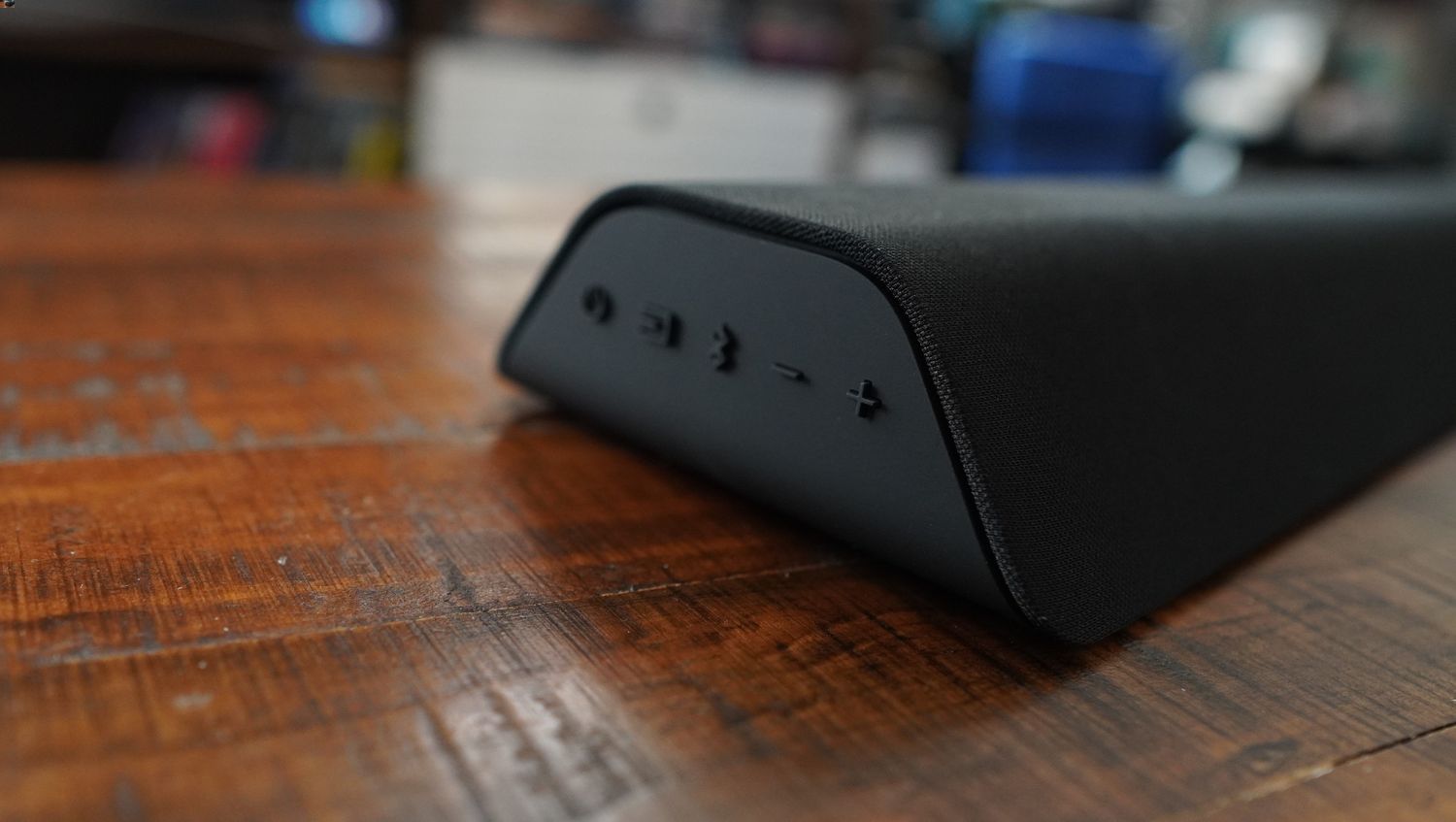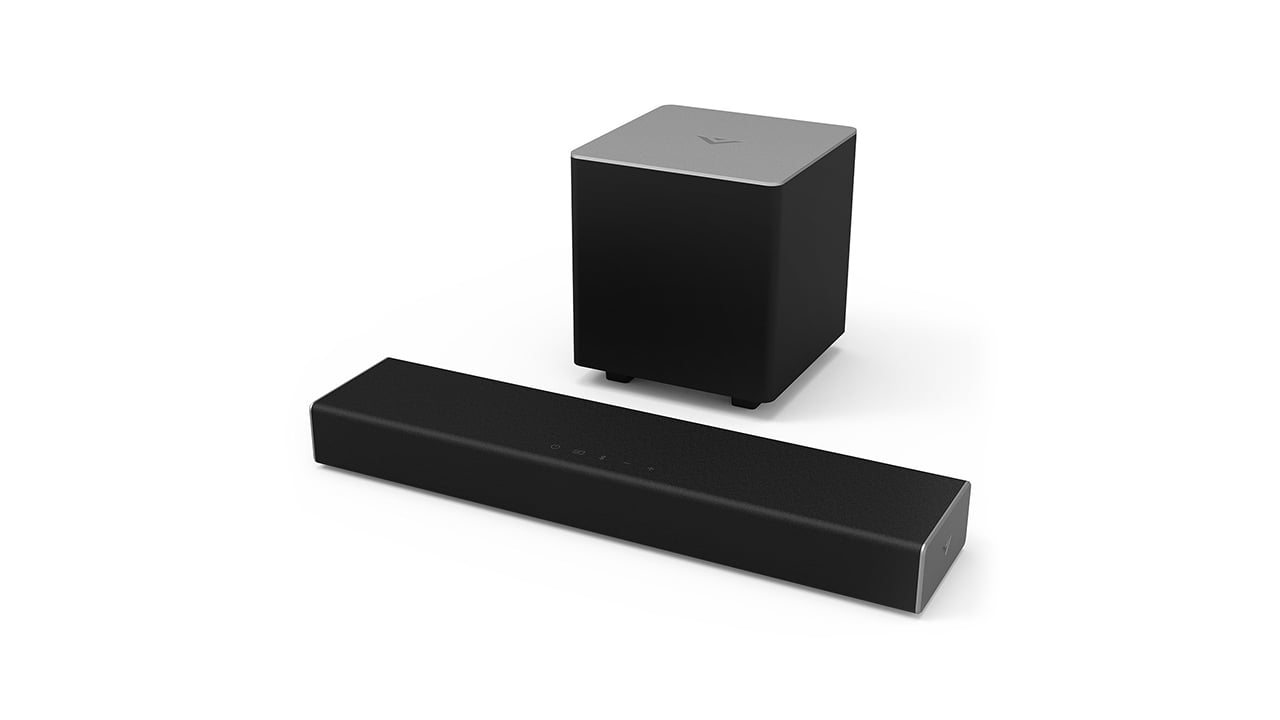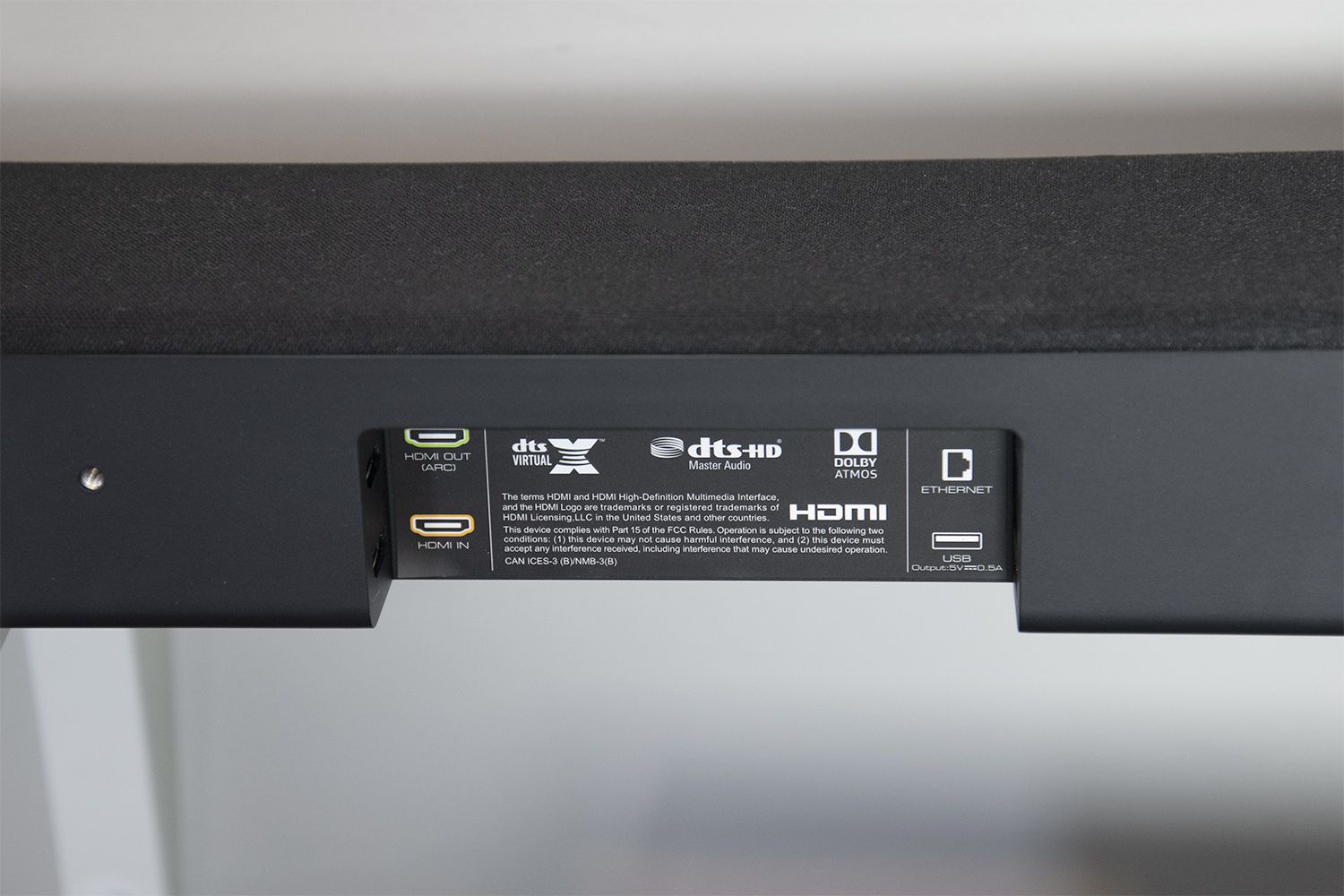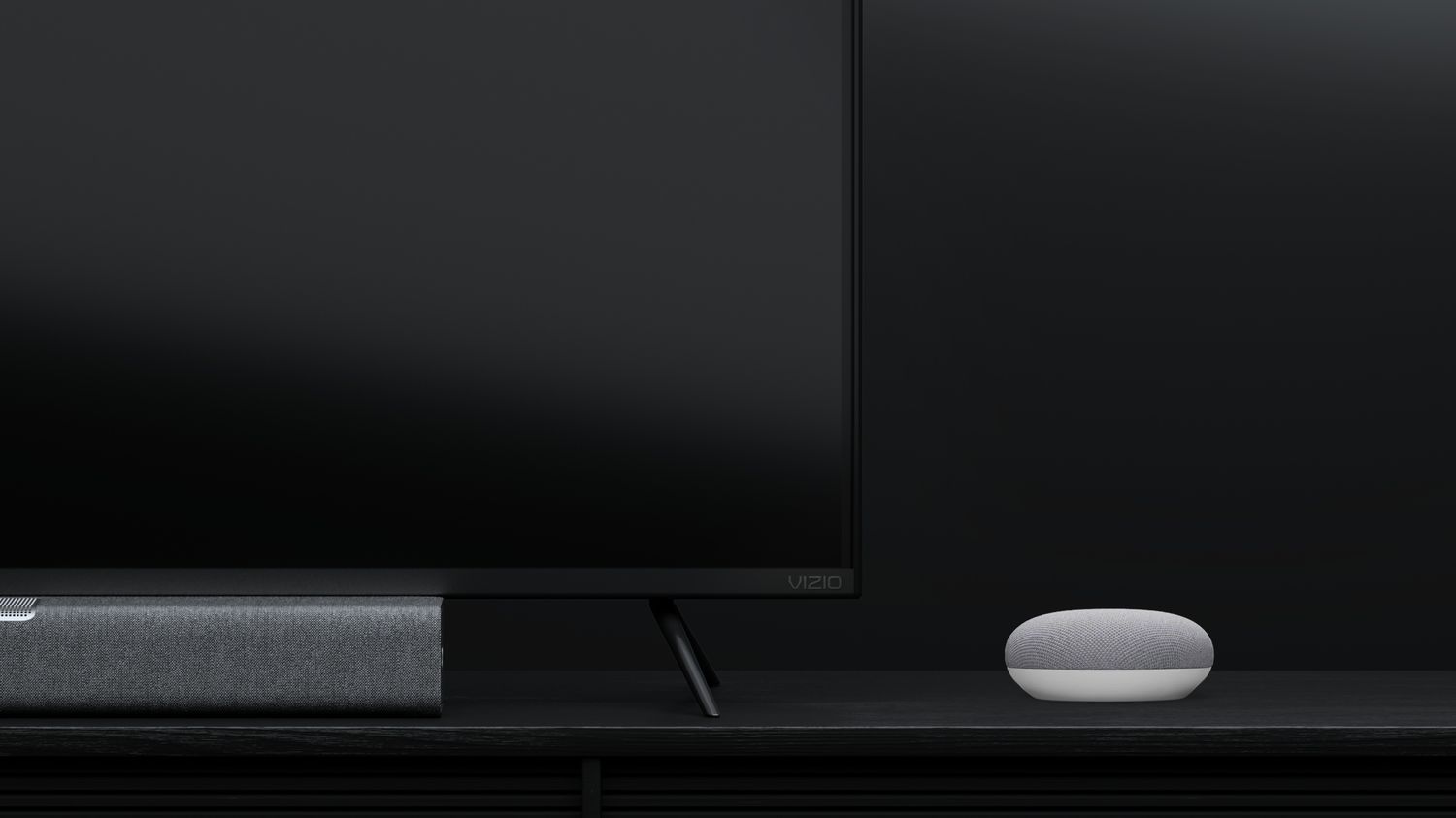Home>Production & Technology>Sound Bar>How Many Watts Vizio Sound Bar And Subwoofer Use?
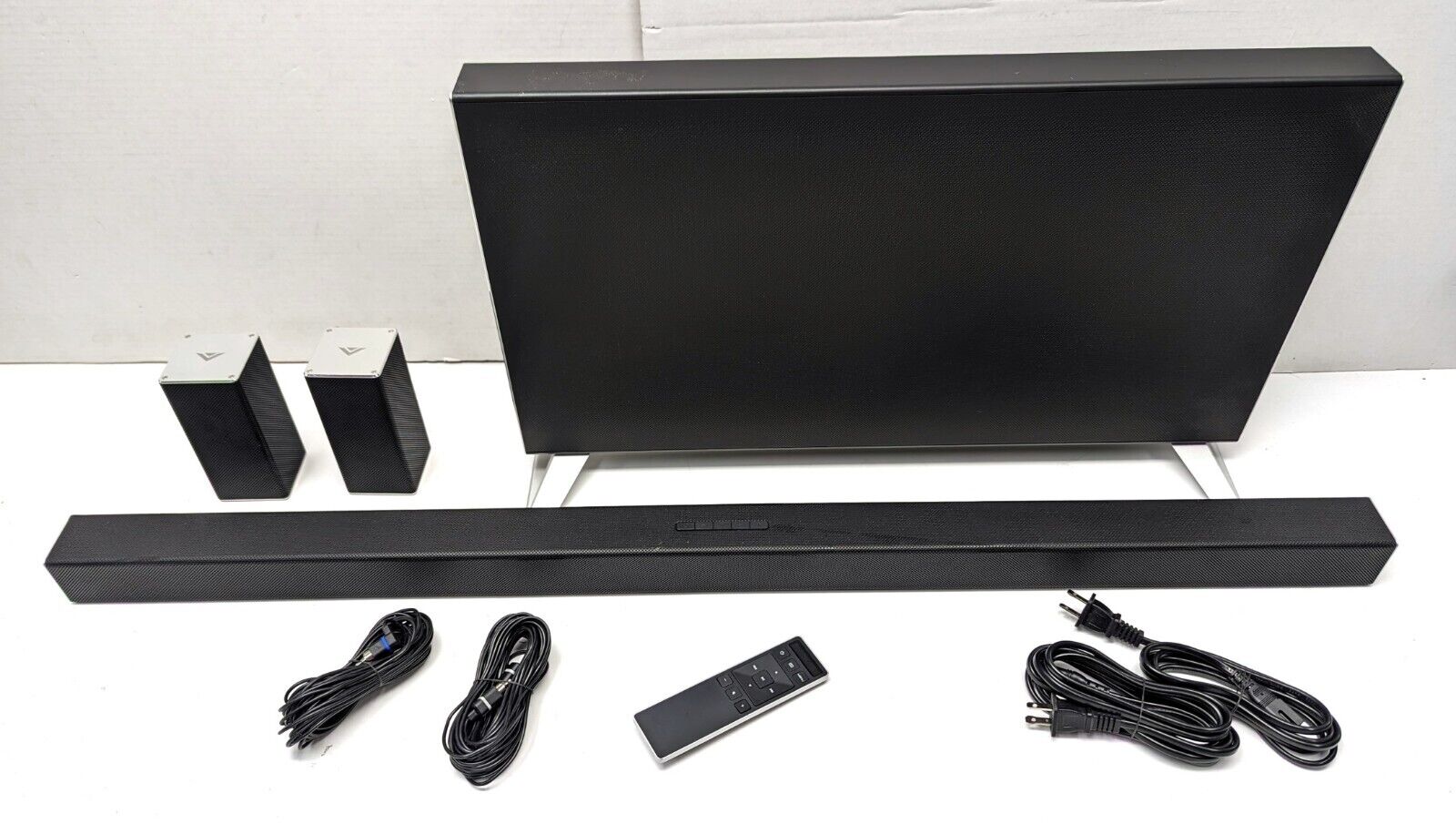

Sound Bar
How Many Watts Vizio Sound Bar And Subwoofer Use?
Modified: February 18, 2024
Find out how many watts Vizio sound bar and subwoofer use to enhance your audio experience. Learn more about the power consumption of sound bars.
(Many of the links in this article redirect to a specific reviewed product. Your purchase of these products through affiliate links helps to generate commission for AudioLover.com, at no extra cost. Learn more)
Table of Contents
Introduction
When it comes to creating the ultimate home theater experience, sound quality is paramount. A sound bar can elevate your TV’s audio and provide immersive, high-quality sound for your favorite movies, music, and games. However, it’s important to consider the power consumption of a sound bar, especially if you’re conscious about energy efficiency or want to keep your energy bills in check.
In this article, we will discuss the power consumption of Vizio sound bars and subwoofers. Vizio is a well-known and reputable brand that offers a range of sound bars to suit different needs and budgets. Understanding how much power these devices consume can help you make an informed decision when choosing the right sound bar for your home entertainment setup.
By knowing the power consumption of Vizio sound bars and subwoofers, you’ll also have a better understanding of their impact on your overall energy usage. This knowledge can help you make adjustments to your home energy consumption and contribute to a more sustainable lifestyle.
So, if you’re curious to learn more about the power consumption of Vizio sound bars and subwoofers, read on as we delve into the details and provide you with valuable insights.
Power Consumption of Vizio Sound Bar
When it comes to power consumption, Vizio sound bars are designed to be energy-efficient without compromising on performance. The power consumption of a Vizio sound bar typically depends on the model and features it offers.
On average, a Vizio sound bar will consume anywhere between 10 watts to 100 watts of power during operation. The power consumption may vary depending on factors such as the sound bar’s size, speaker configuration, and built-in amplifiers.
Smaller sound bars with basic features tend to have lower power consumption. These models typically consume around 10 to 30 watts of power. They are suitable for small to medium-sized rooms and provide an upgrade from your TV’s built-in speakers.
On the other hand, larger and more advanced sound bars with multiple speakers, built-in subwoofers, and additional features like Bluetooth connectivity and Dolby Atmos support may consume more power. These high-end models can consume up to 100 watts of power to deliver a truly immersive audio experience.
It’s worth mentioning that power consumption can vary depending on the sound settings you choose. For example, if you increase the volume or enable certain sound enhancement features, the power consumption may increase accordingly.
Despite the variation in power consumption, Vizio sound bars are generally designed to be energy-efficient. They use modern technologies and components to optimize power usage and minimize environmental impact.
Additionally, Vizio sound bars often come with power-saving features, such as automatic standby mode. This feature allows the sound bar to enter a low-power state when it’s idle or not in use for a certain period. This helps further reduce power consumption when you’re not actively using the sound bar.
In summary, the power consumption of a Vizio sound bar can range from 10 to 100 watts, depending on the model and features. These sound bars are designed to balance energy efficiency with exceptional audio performance, ensuring that you can enjoy immersive sound while keeping your energy costs under control.
Power Consumption of Vizio Subwoofer
When it comes to creating a rich and deep bass experience, a subwoofer is an essential component of any audio setup. Vizio subwoofers are designed to deliver powerful low-frequency sound reproduction, but how much power do they consume?
Typically, the power consumption of a Vizio subwoofer ranges from 25 watts to 100 watts. The actual power consumption may vary depending on factors such as the size of the subwoofer and its amplifier configuration.
Smaller subwoofers, often referred to as compact or wireless subwoofers, tend to have lower power consumption. These subwoofers typically consume around 25 to 50 watts of power. While they may not produce the same level of bass as larger subwoofers, they can still enhance the overall audio experience and add depth to your sound system.
Larger subwoofers with bigger drivers and more powerful amplifiers may consume more power. These models can consume up to 100 watts of power to deliver a truly immersive bass experience. They are particularly well-suited for larger rooms or for those who crave intense and impactful low-end sound.
Similar to Vizio sound bars, Vizio subwoofers feature power-saving functionality. When not in use or when the audio system is idle, the subwoofer can enter a standby mode to reduce power consumption. This helps ensure energy efficiency and minimizes the environmental impact of the subwoofer.
It’s important to note that the power consumption of the subwoofer is in addition to the power consumption of the sound bar or receiver it is connected to. Keep this in mind when calculating the total energy usage of your audio setup.
While Vizio subwoofers are engineered to provide impressive bass performance, they are also designed with energy efficiency in mind. The power consumption may vary depending on the specific model and features, but overall, Vizio subwoofers strike a balance between power output and energy usage.
By understanding the power consumption of Vizio subwoofers, you can make informed decisions when setting up your audio system, ensuring that you create the perfect balance of sound quality and energy efficiency.
Combined Power Consumption of Vizio Sound Bar and Subwoofer
When setting up a home theater system with both a Vizio sound bar and a subwoofer, it’s important to consider the combined power consumption of these two components. Understanding the total power usage will help you manage your energy consumption effectively and make informed decisions to minimize your environmental impact.
The power consumption of the combined setup will depend on the specific models of the Vizio sound bar and subwoofer you choose, as well as their operational settings.
On average, the combined power consumption of a Vizio sound bar and subwoofer can range from 35 watts to 200 watts. This estimate takes into account a variety of factors, including the size and power output of the sound bar and subwoofer, as well as any additional features and settings being used.
For example, if you opt for a smaller, entry-level sound bar and a compact subwoofer, the combined power consumption may be around 35 to 75 watts. These models are suitable for smaller rooms or for those who value energy efficiency without compromising on sound quality.
On the other hand, if you choose a larger, high-end sound bar with built-in subwoofers and a more powerful external subwoofer, the combined power consumption can reach up to 200 watts. These setups are designed to deliver a truly immersive audio experience, especially in larger rooms or for those who crave intense and powerful sound.
It’s important to note that these power consumption estimates can vary based on different scenarios. Higher volume levels, enhanced sound modes, and other active settings can increase power usage. Additionally, if the sound bar and subwoofer are left in standby mode when not in use, they will consume minimal power but still draw some energy from the grid.
To optimize power consumption and reduce energy usage, consider utilizing power-saving features that may be available on your Vizio sound bar and subwoofer. These features can automatically put the devices into standby mode when not in use, minimizing power consumption without compromising convenience.
Ultimately, the combined power consumption of your Vizio sound bar and subwoofer will depend on your specific setup and usage patterns. It’s always a good practice to refer to the manufacturer’s specifications and guidelines to ensure you have accurate information on power consumption and to make adjustments as necessary to align with your energy-saving goals.
Factors Affecting Power Consumption
The power consumption of a Vizio sound bar and subwoofer can be influenced by several factors. Understanding these factors can help you optimize power usage and minimize energy consumption. Here are some key factors that can affect the power consumption of your Vizio audio system:
- Volume Level: Higher volume levels require more power to drive the speakers and produce louder sound. If you consistently listen to audio at high volumes, it can result in increased power consumption. Consider adjusting the volume to a comfortable level to reduce power usage.
- Sound Modes and Enhancements: Many Vizio sound bars offer various sound modes and audio enhancements, such as surround sound or virtual surround. These modes often utilize additional processing power, leading to slightly higher power consumption. If energy efficiency is a priority, consider using simpler sound modes or disabling enhancements when not needed.
- Connection Type: The method of connecting your Vizio sound bar and subwoofer to your TV or other devices can impact power consumption. Wired connections like HDMI or optical cables generally consume less power compared to wireless connections like Bluetooth, as wireless technologies require additional energy for transmission.
- Playback Source: The type of content you are playing can also have an effect on power consumption. Streaming high-definition content from online sources or playing demanding audio formats may require more processing power and thus result in slightly higher power usage compared to playing standard-definition content.
- Standby Mode: Vizio sound bars and subwoofers often have standby modes that automatically activate after a period of inactivity. While in standby mode, the devices consume minimal power but remain ready for use. If you want to reduce power consumption while not actively using your audio system, ensure these devices are in standby mode.
It’s important to note that while these factors can impact power consumption, Vizio sound bars and subwoofers are designed with energy efficiency in mind. They strive to strike a balance between delivering outstanding audio performance and minimizing power usage.
To further reduce power consumption and maximize energy efficiency, consider implementing these additional tips:
- Turn off the sound bar and subwoofer when not in use for an extended period.
- Consider using a smart power strip that can automatically cut power to devices when not in use.
- Regularly update your Vizio sound bar and subwoofer firmware to take advantage of any energy-saving optimizations.
- Ensure proper ventilation and placement of the devices to prevent overheating, which can increase energy consumption.
By considering these factors and implementing energy-saving practices, you can effectively manage the power consumption of your Vizio sound bar and subwoofer, helping to preserve energy resources and reduce your environmental footprint.
Tips for Reducing Power Consumption
While Vizio sound bars and subwoofers are designed to be energy-efficient, there are several additional steps you can take to further reduce power consumption. These tips will not only help you save energy but also contribute to a greener and more sustainable lifestyle. Here are some effective tips for reducing the power consumption of your Vizio audio system:
- Optimize Volume Levels: Adjust the volume of your sound bar and subwoofer to a level that is comfortable for your listening experience. Higher volume levels require more power, so finding the right balance will help you reduce your energy usage.
- Utilize Power-Saving Modes: Take advantage of the power-saving features available on your Vizio sound bar and subwoofer. Enable automatic standby mode to ensure the devices enter a low-power state when not in use for a certain duration. This will significantly reduce power consumption during idle periods.
- Enable Eco Mode: Some Vizio sound bars and subwoofers have an Eco Mode or Energy Saver Mode that further optimizes power usage. Enabling this mode can reduce electricity consumption without compromising audio quality, making it an excellent option for energy-conscious users.
- Manage Sound Enhancements: Certain sound modes and audio enhancements can increase power consumption. If energy efficiency is a priority, consider using simpler sound modes or disabling enhancements that may not be necessary for your specific audio content.
- Use Wired Connections: When connecting your Vizio sound bar and subwoofer to your TV or other devices, opt for wired connections like HDMI or optical cables. Wireless connections like Bluetooth can consume more power, so using wired connections will help reduce energy usage.
- Power Off When Not in Use: Get into the habit of turning off your sound bar and subwoofer when you’re not using them for an extended period. This simple step can significantly reduce power consumption and avoid unnecessary energy usage.
- Position for Proper Ventilation: Ensure that your Vizio sound bar and subwoofer are properly positioned and have adequate ventilation. Overheating can lead to increased power consumption. Proper airflow around the devices will help maintain their efficiency while reducing energy consumption.
Implementing these tips will not only help you reduce the power consumption of your Vizio audio system but also contribute to overall energy savings in your home. By adopting energy-conscious habits and utilizing the available features and settings, you can enjoy high-quality audio while minimizing your environmental impact.
Conclusion
In conclusion, the power consumption of Vizio sound bars and subwoofers can vary depending on the model, features, and settings. It is important to consider the power consumption of these devices as part of your home entertainment setup to optimize energy efficiency and minimize environmental impact.
On average, a Vizio sound bar consumes around 10 to 100 watts, while a Vizio subwoofer consumes approximately 25 to 100 watts. These power consumption estimates may vary based on factors such as the size, amplification, and additional features of the sound bar and subwoofer.
By understanding the power consumption of your Vizio sound bar and subwoofer, you can make informed decisions about your audio setup, balancing energy efficiency with exceptional sound quality. Additionally, utilizing power-saving features, adjusting volume levels, and optimizing audio settings can help further reduce power consumption.
Remember that the combined power consumption of a Vizio sound bar and subwoofer can range from 35 to 200 watts, depending on the specific models and settings. Considering factors such as volume levels, sound modes, connection types, and standby mode can contribute to a more energy-efficient audio system.
By implementing the tips provided in this article, such as managing sound enhancements, using wired connections, and positioning the devices for proper ventilation, you can further reduce power consumption and contribute to a more sustainable home entertainment setup.
Ultimately, Vizio sound bars and subwoofers are designed to strike a balance between power output and energy efficiency, allowing you to enjoy immersive audio experiences while being conscious of energy consumption. So, go ahead and choose the Vizio audio system that suits your needs, knowing that you can enjoy exceptional sound quality while making eco-friendly choices.

